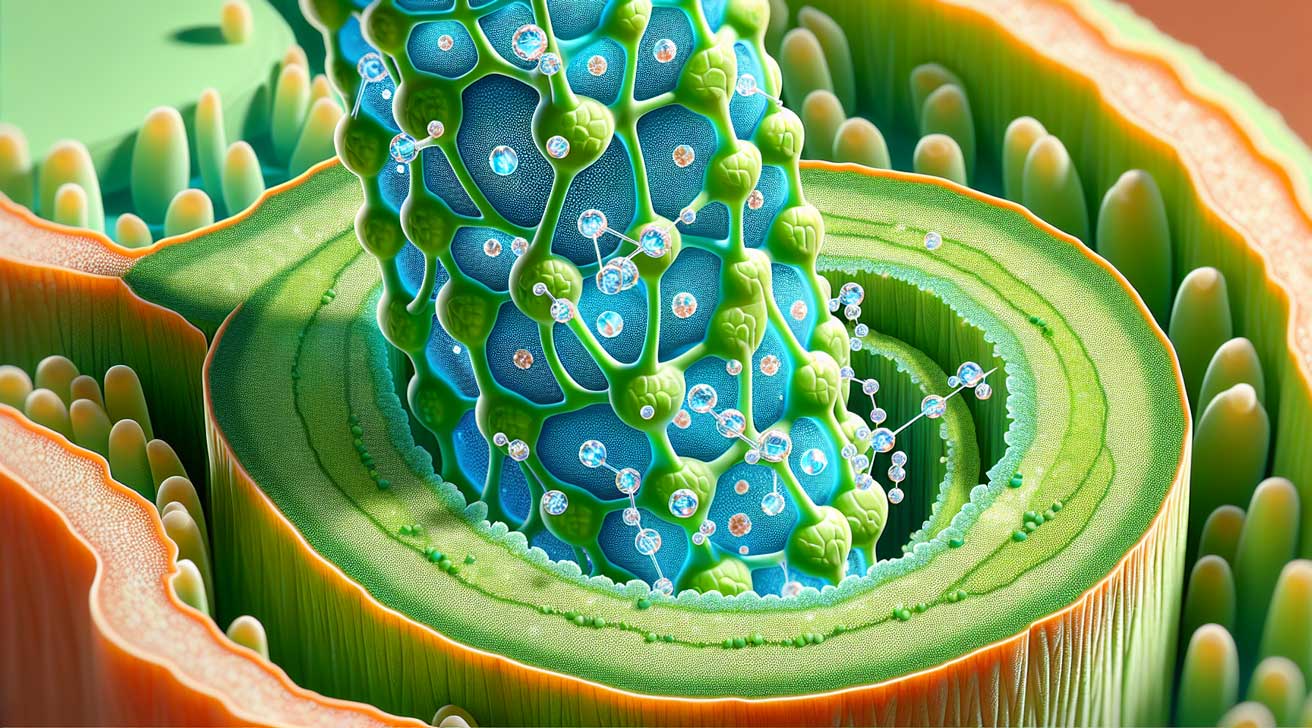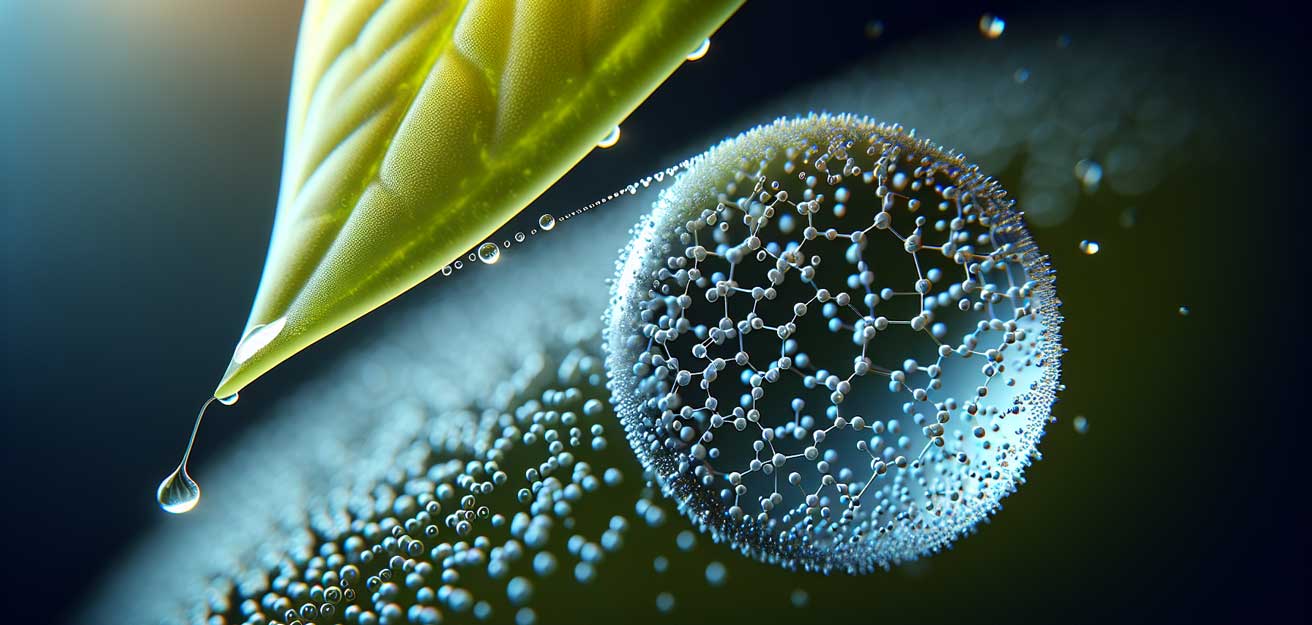Cohesion + Adhesion: The inseparable forces
- Details
- Hits: 4415
You wonder why water exists in drop form or how adhesives function? The answer lies in the powers of the cohesion + adhesion. In this article you will learn what these terms mean exactly, what influence they have on everyday objects and why they are so important in nature and technology. We explain the underlying principles and show how they influence the behavior of Materials determine.

Contents
- Key facts at a glance
- Cohesion + Adhesion: Basics and Differences
- The role of cohesion and adhesion in nature
- Cohesion and adhesion as a basis for industrial adhesives
- Physical properties and phenomena
- Frequently asked questions
Key facts at a glance
Cohesion refers to the attraction between similar particles, which gives materials such as steel or diamond their cohesion. Adhesion describes the attraction between different particles and plays a central role in wetting and adhesion to surfaces, for example in bonding.
During the Nature Cohesion and adhesion enable the transport of water in plants from the roots to the leaves, which is essential for photosynthesis and nutrient absorption.
The surface tension of liquids, caused by cohesive forces, is responsible for phenomena such as droplet formation and influences the wetting and adhesion of liquids to various surfaces. This is technically relevant for processes such as gluing or painting.
Cohesion + Adhesion: Basics and Differences
Cohesion and adhesion are Attractions, which play a crucial role in nature and technology. Cohesion refers to the attraction between similar particles, which is responsible for the cohesion and stability of structures. During adhesion, different particles attract each other. It occurs when molecules of different substances interact with each other. These forces are particularly important when using adhesives as they ensure the adhesion of the adhesive to the surface of the material being bonded.
Specific intermolecular interactions such as electrostatic forces and hydrogen bonds are crucial for adhesion forces.
Cohesion: holding particles together
Cohesion refers to the inner strength of a substance and develops its effect at the molecular level, where it is responsible for the cohesion of the particles. Cohesive forces are responsible, for example, for water to exist in the form of drops or for solids to retain their shape. The strength of cohesive forces in different substances is determined by the type of molecules that make up the substance. The attraction between the particles of a substance is made possible by the cohesive forces.
In everyday life we are constantly surrounded by examples of cohesion. Steel, diamond, tires and shoes are just a few examples of materials in which cohesion plays an important role.
Adhesion: adhesion to surfaces
Adhesion is that Interaction between different materials, for example between adhesive and part to be joined. These binding forces are particularly important when gluing. These forces play a crucial role in adhesion to surfaces. A higher adhesion force can be achieved if the adhesive and the surface of the part to be joined establish more contact. The decisive role here is played by wettability, which is influenced by the weight of the liquid.
The Chemical plays an important role in the study of cohesion and adhesion because it elucidates the interactions between atoms and molecules that are responsible for these forces. These aspects show why certain substances adhere to each other better than others.
The role of cohesion and adhesion in nature

In addition to their applications in technology, cohesion and adhesion play a crucial role in nature. Its effect is particularly Water transport in plants to observe. Due to the hold of the water molecules (cohesion) and the attraction between water and the vascular walls of the plants (adhesion), water can be transported against gravity from the roots to the leaves.
Water transport in plants
The transport of water from the roots to the leaves of the plants takes place through Transpiration so-called, adhesion and cohesion. Transpiration is created when the plant releases water into the air, creating a negative pressure that pulls the water upward within the plant. This process is important for the transport of water and nutrients within the plant.
Cohesion and adhesion are the physical principles that influence this water transport. They ensure that water is attracted to the surface of the vascular cells and that the water flow can withstand the transpiration pressure.
These forces allow plants to absorb water from the soil and transport it to the leaves where it is used for the photosynthesis is needed. This would not be possible without the forces of cohesion and adhesion.
Cohesion and adhesion as a basis for industrial adhesives
During the Technology Cohesion and adhesion are crucial. They play an important role in the selection of adhesives and the strength of adhesive bonds. The possibility of bonding arises from the interaction of various forces at the interface between the part to be joined and the adhesive, with cohesion and adhesion forces in particular playing a decisive role.
Adhesive selection and adhesive strength
The quality and strength of one adhesive connection depends on various factors, including choosing the right one adhesive, the nature of the surfaces to be joined and the application conditions.
When selecting a suitable adhesive, the... Adhesive strength to be taken into account. Adhesive strength refers to the adhesive's ability to permanently bond two materials and withstand stress.
Important factors in selection are the materials to be bonded (such as metal, plastic, wood or glass), the environmental conditions (such as humidity, temperature and chemical exposure) and the type of loading (tensile, shear or peel forces).
There are different types of adhesives, such as Epoxy resins, cyanoacrylates, Polyurethane-Glues and silicones, each with specific properties and strengths. For example, epoxy resins offer high temperature and chemical resistance, while cyanoacrylates are ideal for quick bonds on small parts. Correct preparation of surfaces, use of the appropriate amount and adherence to curing times are also important to achieve maximum bond strength.
When choosing the adhesive in terms of cohesion and adhesion, the structural and geometric design of the parts to be connected as well as the hand strength of the adhesive are crucial.
The strength of an adhesive connection is significantly influenced by the interaction of adhesion and cohesion. Adhesion ensures that Liability of the adhesive on the surface of the material to be joined, while cohesion for the interior strength the adhesive itself is responsible.
However, not all materials stick equally well. Materials with high surface energy, such as metals or glass, are generally easier to wet with adhesives. In contrast, materials with low surface energy have a lower tendency to do so.
Selecting a suitable adhesive for industrial applications is therefore much more than just a question of adhesive strength; it requires a deep understanding of the material properties and the specific requirements of the respective industry.
For example, industry experts know that in the aerospace industry, the use of adhesives that contain special additives to improve conductivity and minimize electrostatic charges is crucial.
Such additives can affect the mechanical strength of the adhesive and therefore require careful selection and testing under real conditions.
Furthermore, it is a little-known fact that pre-treating surfaces with plasma technology can significantly improve adhesion to non-traditional materials such as composites. This specialized knowledge allows adhesives to be evaluated not only on their immediate adhesion strength, but also on their long-term performance and reliability in highly specialized applications.
Physical properties and phenomena

In addition to their applications in nature and technology, cohesion and adhesion also influence various physical properties and phenomena in the Physics. For example, the surface tension of liquids is caused by cohesive forces and leads to the formation of drops.
Surface tension and drop formation
Surface tension is responsible for the fact that liquids tend to minimize their surface area in order to minimize their energetic state. The surface tension is the result of the attractive forces between the molecules within the liquid. An everyday example of this is that insects can ‘walk’ on the surface of water.
The surface tension of liquids is influenced by various factors:
- Type of liquid
- Temperature
- Purity of the surface
- Presence of additives
- Size of the molecules
With increasing Temperature The surface tension usually decreases and reaches zero at the critical point.
Cohesion increases the surface tension of the liquid and causes spherical drops to form, since a sphere is the shape with the smallest possible surface area for a given volume.
Wetting and adhesion to surfaces
Adhesive forces have an influence on wetting and adhesion to surfaces by creating a favorable condition for good wetting and firm adhesion. The high free surface energy of metals, for example, enables good wetting and adhesion when gluing or painting.
Wetting and adhesion to surfaces are influenced by various factors, such as:
- Type of liquid
- Material or surface
- their nature
- Temperature
Water climbing up a glass of water is a classic example of adhesion. This occurs due to the attraction between the water molecules and the glass surface. This visible adhesion leads to edge curvature when water is present in a graduated cylinder, illustrating the effects of adhesion forces.
Summary
In summary, cohesion and adhesion fundamental forces are that play a crucial role in both nature and technology. They are responsible for the cohesion of particles, adhesion to surfaces and influence a variety of physical properties and phenomena. By understanding these forces, we can better understand the world around us and optimize various engineering applications.
Frequently asked questions
What is the difference between adhesion and cohesion?
The difference between adhesion and cohesion is that adhesion describes the attractive forces between molecules of different types, while cohesion describes the attractive forces between molecules of the same type.
What is cohesion easily explained?
cohesion is the tendency of similar particles or molecules to bond together due to attractive forces, which allows the substance to hold together. This attraction arises from interactions between the particles.
What is adhesion simply explained?
At adhesion Different materials bond together due to molecular forces. These forces arise when molecules on one surface interact with those on the other.
What is an adhesion example?
A well-known example of adhesion is the grip between a car tire and asphalt, or a drop of water sticking to a spider web, or a post-it sticking to a glass wall.
What is a cohesion example?
A classic example of cohesion is the behavior of water droplets. When water droplets rest on a smooth surface such as glass or a plant leaf surface, they tend to form a rounded shape. This happens because the water molecules attract each other more strongly than the surrounding air molecules or the surface they lie on.
These cohesive forces are responsible for the phenomenon of surface tension, which can be observed when water in a cup is filled to just above the rim and yet does not overflow. The water molecules attract each other, forming a kind of "skin" on the surface and preventing the water from immediately flowing over the edge. Cohesion plays a crucial role in many natural and technological processes and is fundamental to understanding fluid dynamics and materials science.

Jens Struck is a business owner, journalist and web designer at German Online Publisher GbR in Ried.
